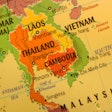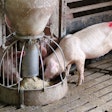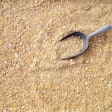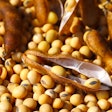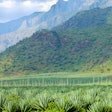Nothing beats a maize-soy diet. That’s what they teach you at graduate school, and they are right to do so if they are in the U.S. (or Brazil, Argentine and everywhere else where maize and soybeans abound). Indeed, these ingredients match animal needs so well that their inexpensive prices (historically speaking, because last decade prices have been a disaster) have etched them in our minds as indispensable when formulating diets for non-ruminants, like pigs and poultry.
But, what happens in places where these ingredients are imported? In most cases, this happens at the expense of local ingredients and by-products that suffer from two misgivings: variable quality, and lack of expertise on how to use them. The first is easy to correct (you must employ a vigorous quality system), but the second obstacle requires long-term (re) education.
Let’s take a real example: Asia-lactose-molasses. I have talked about it before, but it merits repeating. In Asia, there is a need produce Western-type diets for piglets reared in Western-type facilities. Such products are usually rich in milk products because piglets love lactose (the main reason we use dairy products in Stage 1 piglet feeds), and also because dairy products were really cheap when this technology was developed in the UK back in the 1970s. But dairy products are scarce in Asia, so they are imported. But, piglets can thrive equally well on molasses (or dextrose and a host of other simple sugars) as they can on lactose; currently there is not enough know-how in Asia to replace lactose with alternative sugars.
One more example: Europe-wheat-maize. In most places in Europe, wheat reigns as the major cereal in pig and poultry formulas. Why? Because it can be produced here as easily as maize in the U.S. Midwest zone (and wheat thrives in colder climates, too). Now, in some European circles, they will look aghast if you suggest maize is a better cereal than wheat (it is, it contains 5 percent more energy and less anti-nutritional factors!) only because they have never used this ingredient. There is even a school of thought suggesting maize is actually harmful for piglets; hundreds of millions of U.S. piglets will testify to the contrary.
So, at the end, it goes back to education. Students must learn at graduate school to look for the reasons why we use each ingredient and not just which ingredients we should use. When time comes, they will be able to replace everything with what makes better “cents.” This way, a good nutritionist will always be invaluable.


